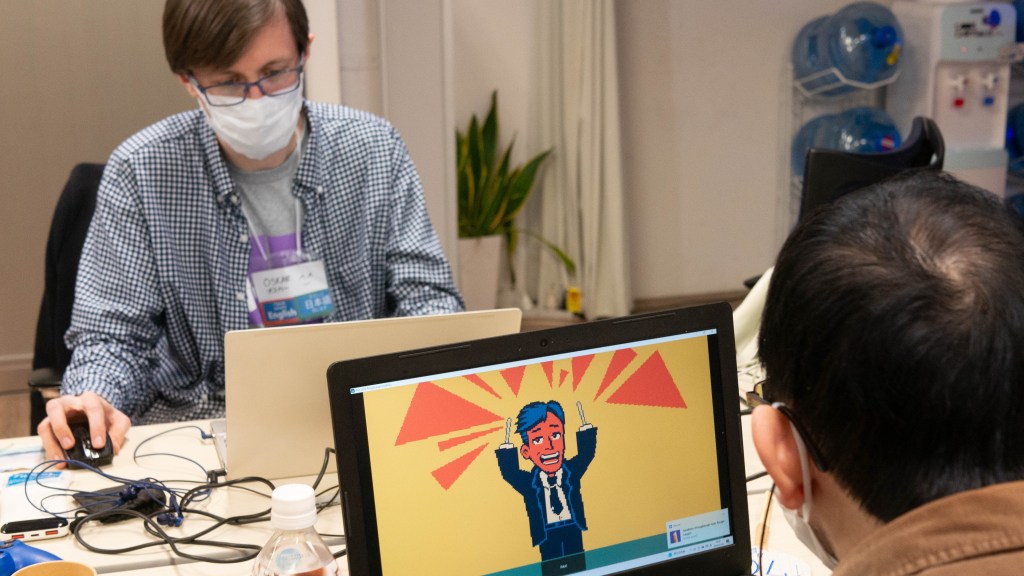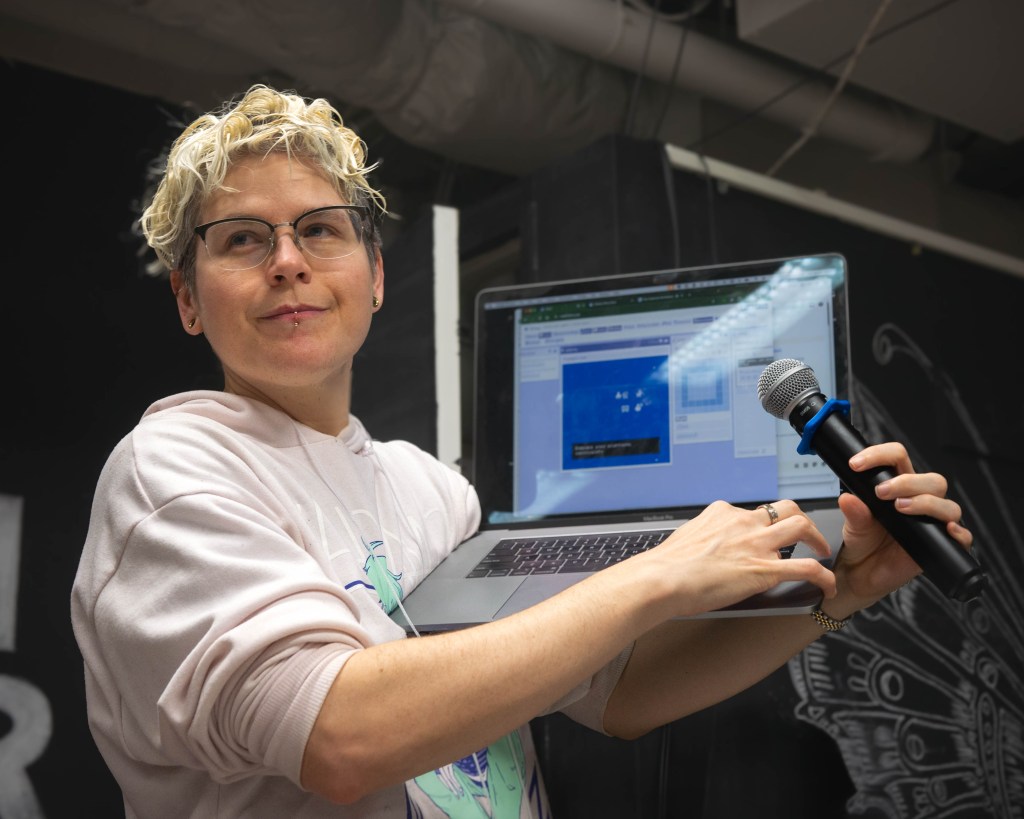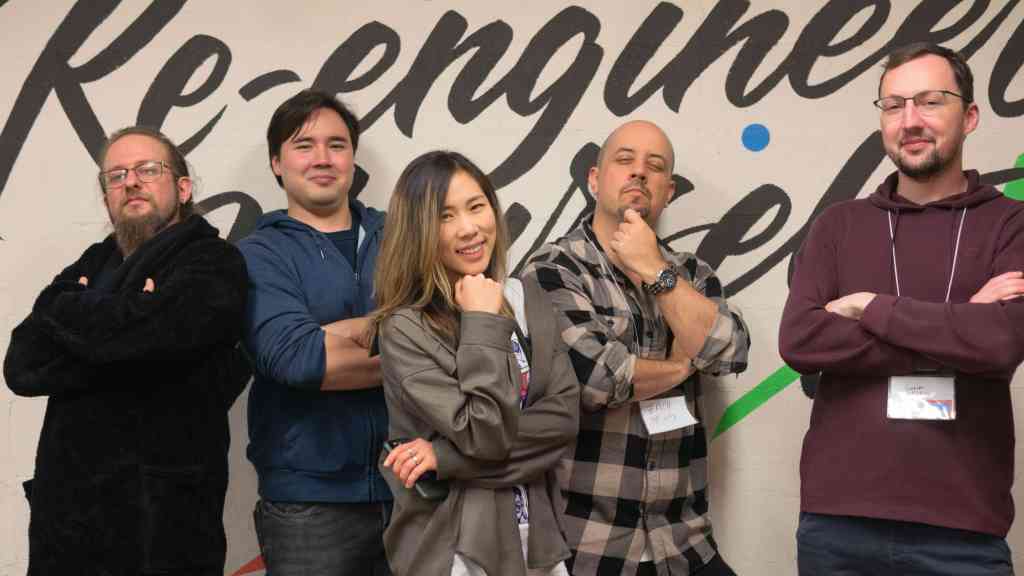As someone who is patently not a game developer, simply making a video game would be an extremely gargantuan task. To make one within 48 hours, the goal of Global Game Jam, seemed impossible.
Yet game developer professionals, hobbyists and game enthusiasts have been doing this since 2009 via Global Game Jam, a worldwide event where jammers meet up and form teams with the aim of creating a game together under a theme and 2-day time limit.
Jumping into my very first jam, I decided to participate via the bilingual Let’s Games! Tokyo site located at Code Chrysalis in Roppongi, Japan. What I discovered over the next 48 hours was surprising, inspiring and a whole lot of fun – as video games always are.
A newcomer to bilingual game jams
Heading down the elevator to the site, I felt increasingly silly, shy and a bit awkward. As they say, progressing through adulthood makes you more and more a creature of comfort. Trying new things becomes more daunting. What was scariest to me was the fact that I could barely program, and would likely be dead weight for whichever unfortunate team would be stuck with me.
I wasn’t alone in feeling this way. As we did rounds of introductions and icebreakers, the diversity in backgrounds and skill sets became clear. A handful of folks worked in game development. A few more who were veteran jammers with a coding or UI background.
But more unique skills sang out – people with music as their forte; extremely talented pixel artists and wordsmiths; even some curious folks with a generalist background who simply wanted to have the experience of making a game.
Read: Small and special: The best game jam games to play right now
“I noticed that this year I found myself saying the same excuse as last year, that I would try once I had more experience programming,” says Casey, a jammer who was part of team Black Bear Roll. “But I also realised that moment of acceptance would never come, so I just went for it and dived right into the deep end.”
Making me laugh, making a game
The theme for this year’s Global Game Jam was “Make Me Laugh,” and it was fascinating to see how various groups at our site would interpret the theme. A byproduct of being a bilingual games jam in Japan saw many of us turn towards nuanced Japanese cultural references. These were often based on universal experiences of living in Japan, regardless of background.
There were games like ‘Tamagoji’, a portmanteau of the popular handheld digital pet ‘Tamagotchi’ and the ‘oji’ the Japanese word for ‘uncle’. Built on Pico8, the game saw you taking care of an old man by providing him beer and allowing him to take smoke breaks.
Another one called ‘Chopstuck’, was about a salaryman whose hands are turned into chopsticks by ‘Ohashiyashi’, the Grand Goddess of Chopsticks. Gameplay involved completing rudimentary daily tasks such as opening doors and eating, with only two stick appendages to operate with.

A jam site favourite was ‘Kanpai’, a game about racing to the bottom with your beer glass, a caricature on Japanese business culture where one must always aim to toast your glass below your senior’s.
“Kanpai is a great spin on a specific trait of Japanese culture that is not only funny to foreigners but also to Japanese people. Beyond the concept, the execution was brilliant and I can totally see it evolving into a commercial title,” says Marc, a jammer who also works as a game designer in Japan.
Coding, culture and community
CJ is a co-owner at indie developer studio Studio Terranova, and one of the organisers of the Let’s Games! Tokyo jam site. They tell me that this year is the closest they’ve ever been to becoming a fully bilingual games jam.
“We want to make a space where the “English speaking” sphere of Tokyo and the “Japanese speaking” sphere can come a little closer together and make unexpected and surprising connections. It is, of course, a big effort to challenge yourself to communicate with a language you may not use everyday—but the visual communication of game-building can be a way to bridge that gap.”
This was no easy task. CJ and their team have to overcome the usual challenges of organising a jam site – finding a venue, contacting sponsors, proactive promotion – plus the running of the event, which involves everything from mentoring to making sure trash is recycled. On top of that, they are tasked with making sure everyone in this diverse space feels comfortable.
“It takes a native Japanese speaker who is very strong-willed and curious to be in a team with non-native Japanese speakers and stay the entirety of the jam. We’ve had people drop out before because they were part of a conversation that was going too fast in English and they felt like they didn’t belong,” shared CJ.
However the effort pays off when CJ receives positive feedback from their jammers.
“Some opportunities [from being a bilingual site] we’ve had is native Japanese speakers who are repeat visitors and who bring friends. They are some of our biggest fans, and by bringing a buddy along, they’re helping the space be even more bilingual.”

Bilingual game jams take dedication, and at Let’s Games! Tokyo, all instructions and announcements were provided in both English and Japanese, to the best of everyone’s ability. This was further supported by the kindness and patience of jammers who would also try to accommodate one another. There were clear differences in language abilities across the board, but never was there friction due to languages not being understood.
Also, simply focusing on English and Japanese doesn’t account for the true breadth of nationalities present at the site, with people from Switzerland to Canada, France to Singapore. Thus, cultural differences in the ways that we work is also something that jammers had to work around.
Japanese jammer and indie game developer, shoma, has participated in many overseas jams hosted on itch.io but this was his first experience at a jam in Japan.
“One of the differences that I personally feel is language. At overseas jams, there are times when people cannot play the game unless we explain the game and change the language within the game. This makes development difficult within a short period of time. As a result, I started thinking about creating games that don’t require language.”
Tips for potential jammers
Having completed my first bilingual game jam, I can certainly attest to the benefits of trying it at least once. You do have to give up an entire weekend, but in exchange you get to collaborate with interesting people, get some insight into how games are made, and experience the thrilling sense of triumph when you’ve ‘shipped’ your game.
“As far as experiencing it goes, I would say just do it. Everyone I met was extremely kind and welcoming, despite my lack of knowledge. No better way to experience it, and you learn a ton,” says Casey.
Shoma thinks that those who do not have technical skills could also have an advantage. “Not being able to do certain things can be seen as a strong constraint, but it makes it easier to come up with concepts.”
Shoma, alongside his team mate, uchuzine, produced “TRUST ME,” a humorous game about trust and betrayal, disguised as a cooperative game.
“I have participated in jams where some team members have zero experience making games nor particular skills but they still made a game in 48 hours. Everyone ends up busy, everyone ends up useful,” shares Marc. Marc and his team developed ‘Dorobo King ShowTime!’ at this year’s Global Game Jam.
Jammer and mentor, Philippe, recommends finding a site similar to Let’s Games! Tokyo that encourages strangers to team up. “And make sure it’s in person,” he continues. “It’s so motivating getting to a site and seeing all the teams working on their projects.”





